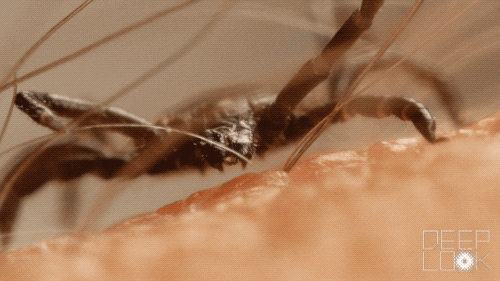TICKS SUCK. A guide to avoiding them — and bites.
What are TICKS and why are we talking about them? Ticks are 4 track black-legged creatures that carry Lyme disease and live in forested areas with tall grass and leaf litter.
Ticks are now reportedly showing up in places that were deemed safe, from coastal California beach areas to manicured lawns in the Northeast. The number of ticks is slowly branching out into new habitats. More of them are carrying pathogens.
We are finding that ticks carry bacteria that can cause a headache, fever, chills, and severe illnesses if treatment is delayed. So far, there have been 50,000 cases reported each year. In rare cases, tick-borne diseases can be fatal.
“Every year they say it’s going to be a big year — either because of acorns or cold winters or warm winters ... but all of those factors vary from one location to the next.”
Know your tick types
Here's what you need to look out for and what to do if you ever get bitten. Ticks come in different shapes, sizes, and colors. Each carries different bacteria.
Six common types of adult female ticks. Top row, left to right: Lone star, Black-legged, Asian long-horned. Bottom row left to right: Gulf coast, American dog, Rocky mountain wood
(Top row, left to right) Public Health Image Library, Wikimedia Commons, James Gathany/CDC (Bottom row, left to right) Public Health Image Library, Patrick Gorring/iNaturalist, Public Health Image Library
The black-legged tick, often referred to as a deer tick, can carry Lyme disease, babesiosis, ehrlichiosis, anaplasmosis and powassan virus. An adult full-grown black-legged tick is the size of a sesame seed; a nymph is the size of a poppy seed. It's found in the eastern half of the U.S. Black-legged ticks near the Pacific Coast are a cousin of this tick, known as the Western black-legged tick.
The Lone Star tick is aggressive; instead of "questing" from a blade of grass like a black-legged tick, it may pursue a person 50-75 feet away. "People could be hanging out on their deck and they'll crawl up on them," Dempsey says.
They can carry ehrlichiosis, heartland virus, tularemia and Southern tick-associated rash illness. Their bite may also trigger alpha-gal syndrome, which can cause an allergy to meat. Adult females have a white dot on their backs.
Its range includes a large swath of the country from Iowa to Texas and everywhere East of there.
The Gulf Coast tick is a close relation.
The American dog tick, also known as a wood tick, can carry Rocky Mountain Spotted Fever, one of the deadliest tick-borne diseases, and tularemia. This tick is much bigger than a black-legged tick, so people are more likely to spot them when they latch on. It's found in the Eastern two thirds of the country and California.
The Rocky Mountain wood tick can spread Colorado Tick Fever in addition to Rocky Mountain Spotted Fever and tularemia. It ranges primarily in the Northern Rocky Mountain region.
The Asian long-horned tick A new species landed in the U.S. in 2017, when it was spotted for the first time on a sheep in New Jersey. It's now been noted in at least 15 states on the Midwest and East coast. Female ticks do not need to mate to lay eggs, and thousands can be found together, making grassy areas appear to be moving. They have not yet been found to transmit disease in the U.S.
To avoid getting bitten, stay vigilant about taking precautions whenever you are spending a significant amount of time outdoors — whether you are hiking or mowing your lawn.
Wear long-sleeved outfits and pants if possible. Tucking your pants into your socks gives ticks less access and the advantage of biting your skin.
Shed all your clothes on a porch before going inside to keep any hangers-on if possible. Jump in the shower as soon as you've been outside, check for ticks, and scrub. Remember, these critters are TINY and can be easily missed!
Disinfect all your clothes in the dryer on high heat for at least 6 minutes to kill any stragglers.
What to do if you get bitten?
Don't panic! I know it's hard to follow but not every tick carries a harmful bacteria or virus.
Grab a pair of fine tweezers and remove them as quickly as possible. Pull them off as close to the skin as possible.
Watch for symptoms: rashes, headache, flu-like symptoms. A stiff neck and swollen lymph nodes are associated with Lyme disease.
If you are unsure and think you are in a critical condition, go straight to your healthcare provider.
Smart hack
for keeping critters off while out in the wild: Wrap duct tape around socks and pant legs to prevent ticks from crawling in.
Sheila Eldred for NPR









